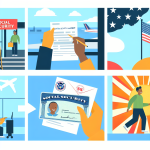
How Secure Are Mobile Banking Apps in 2024?
Mobile banking apps have become an integral part of our daily lives, offering convenience and accessibility to manage our finances on the go. However, with the increasing reliance on these apps for financial transactions, a major concern that arises is the security of mobile banking apps. In 2024, as technology advances and cyber threats evolve, it’s essential to examine the security measures in place to protect sensitive financial information.
The Evolution of Mobile Banking Security
Over the years, mobile banking security has significantly evolved to counter emerging threats and safeguard customer data. In 2024, banks and financial institutions are implementing advanced security features to ensure the confidentiality and integrity of transactions. Some of the key security measures in modern mobile banking apps include:
- Multi-factor authentication: Utilizing biometric data such as fingerprint or facial recognition along with traditional passwords adds an extra layer of security.
- End-to-end encryption: Protecting data transmission between the app and the bank’s servers with strong encryption protocols.
- Secure login methods: Introducing dynamic PINs, one-time passwords, and security questions to prevent unauthorized access.
Challenges and Vulnerabilities
While mobile banking apps have enhanced security features, they are not immune to challenges and vulnerabilities. Cybercriminals are continuously devising new methods to breach security defenses and exploit weaknesses in the system. Some common challenges that mobile banking apps may face include:
- Phishing attacks: Deceptive emails or messages that trick users into revealing their login credentials or personal information.
- Malware threats: Malicious software designed to steal sensitive data from the user’s device, posing a risk to the security of the app.
- Identity theft: Unauthorized access to personal information, leading to financial fraud and misuse of sensitive data.
Enhancing Security Measures
To address the evolving threats in 2024, mobile banking apps need to continuously enhance their security measures and stay vigilant against potential risks. Here are some strategies to improve the security of mobile banking apps:
- Regular security updates: Implementing timely patches and updates to fix security vulnerabilities and protect against newly discovered threats.
- Security awareness training: Educating users about best practices for securely using mobile banking apps and recognizing potential security threats.
- Biometric authentication: Emphasizing the use of biometric data for secure and convenient user authentication.
- Behavioral analytics: Monitoring user behavior patterns to detect any abnormal activity or signs of unauthorized access.
The Future of Mobile Banking Security
Looking ahead, the future of mobile banking security will continue to focus on innovation and adaptation to emerging cyber threats. Technologies such as artificial intelligence and machine learning will play a crucial role in strengthening security measures and protecting customer data. Additionally, the collaboration between financial institutions, cybersecurity experts, and regulatory bodies will be essential in establishing comprehensive security standards for mobile banking apps.
While the security landscape may evolve, one thing remains certain – the importance of prioritizing security in mobile banking apps to ensure the trust and confidence of users in managing their finances securely and efficiently.





